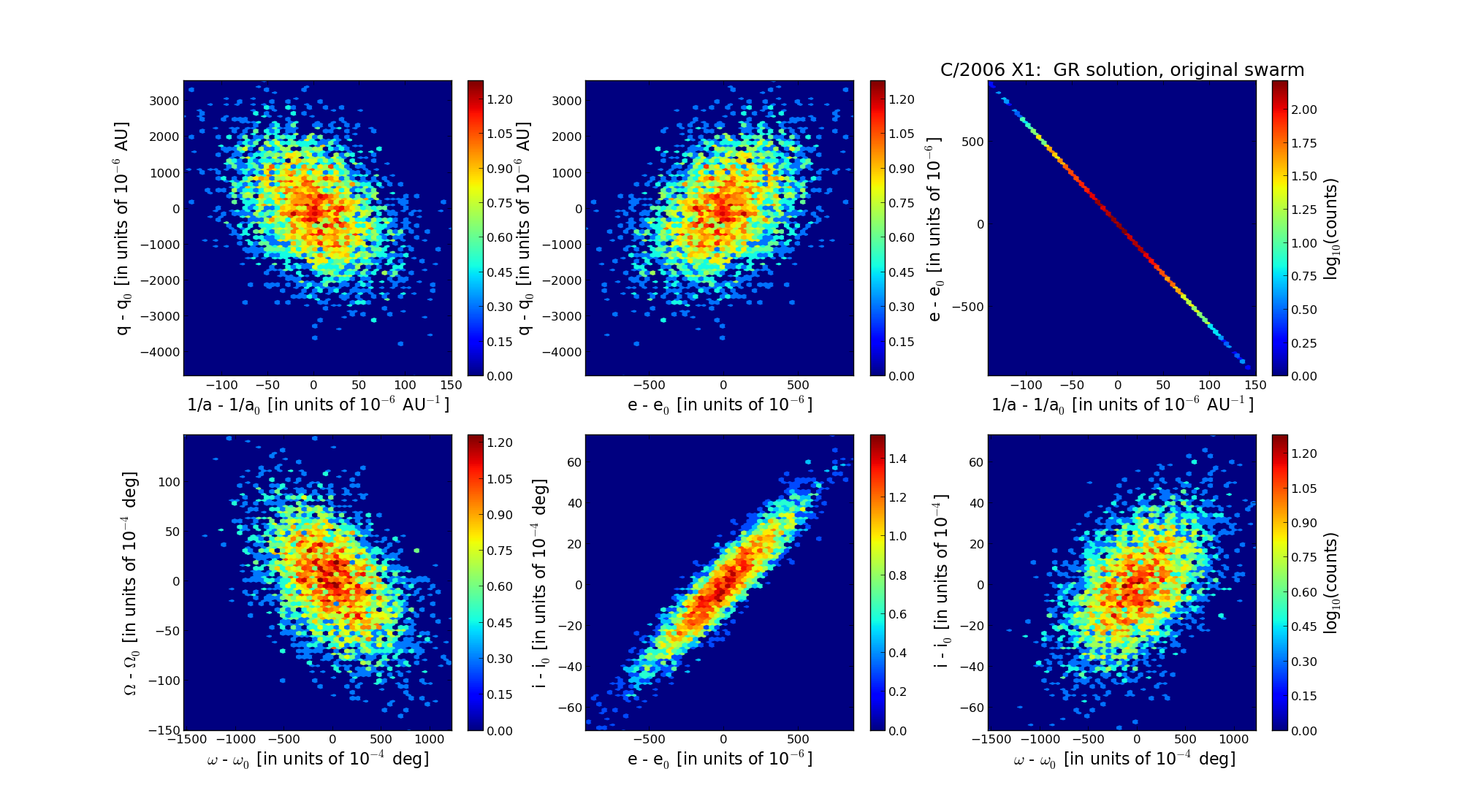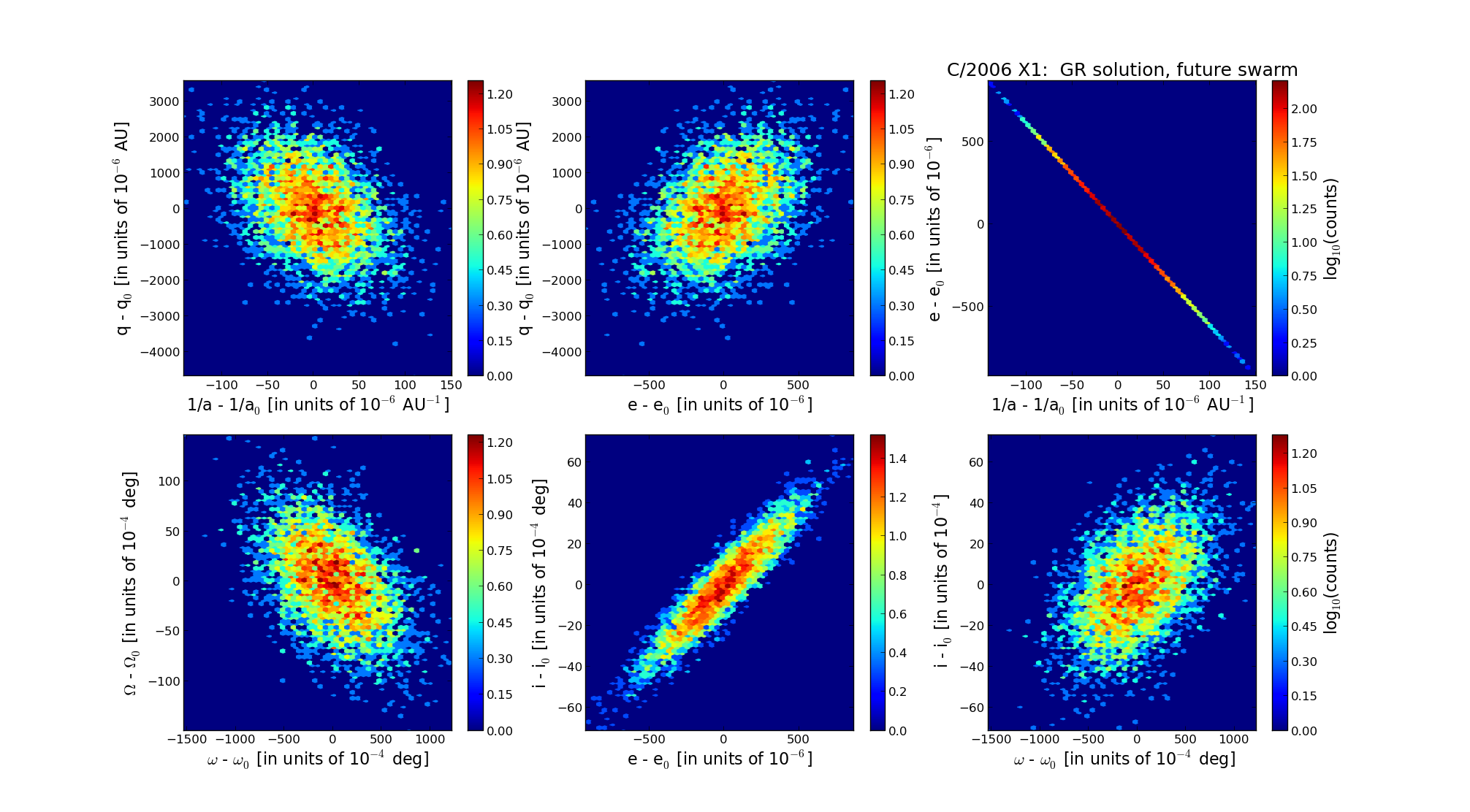| Solar System Dynamics & Planetology Group |
 |
C/2006 X1 LINEAR |  |
| Solar System Dynamics & Planetology Group |
 |
C/2006 X1 LINEAR |  |
| number of observations | 96 |
| number of residuals | 185 |
| data interval | 2006 Dec. 11 — 2007 Feb. 15 |
| rms [arcsec] | 0.39 |
| orbit quality class | 2b |
| Epoch (TT) | 20061211.0 | = JD 2454080.5 |
| time of perihelion passage (TT) | 20060305.642806 | ± 0.362207 |
| perihelion distance | 6.12558539 | ± 0.00108144 |
| eccentricity | 0.99939905 | ± 0.00025141 |
| argument of perihelion [deg] | 101.275279 | ± 0.037106 |
| longitude of the ascending node [deg] | 255.247320 | ± 0.004037 |
| inclination [deg] | 42.615407 | ± 0.001975 |
| inverse semimajor axis [10-6 au-1] | 98.10 | ± 41.06 |

| Epoch (TT) | 16961125 | |
| time of perihelion passage (TT) | 20060305.249803 | ± 0.355922 |
| perihelion distance | 6.12743813 | ± 0.00106507 |
| eccentricity | 0.99886576 | ± 0.00025284 |
| argument of perihelion [deg] | 101.261223 | ± 0.036510 |
| longitude of the ascending node [deg] | 255.291798 | ± 0.004073 |
| inclination [deg] | 42.589967 | ± 0.001991 |
| inverse semimajor axis [10-6 au-1] | 185.11 | ± 41.28 |

| Epoch (TT) | 23130406 | |
| time of perihelion passage (TT) | 20060305.785983 | ± 0.355776 |
| perihelion distance | 6.12896789 | ± 0.00106639 |
| eccentricity | 0.99998846 | ± 0.00025272 |
| argument of perihelion [deg] | 101.293128 | ± 0.036484 |
| longitude of the ascending node [deg] | 255.265853 | ± 0.004051 |
| inclination [deg] | 42.583280 | ± 0.001987 |
| inverse semimajor axis [10-6 au-1] | 1.88 | ± 41.23 |